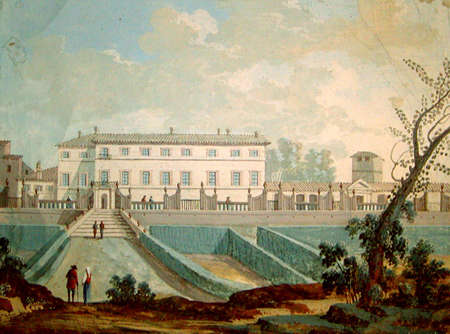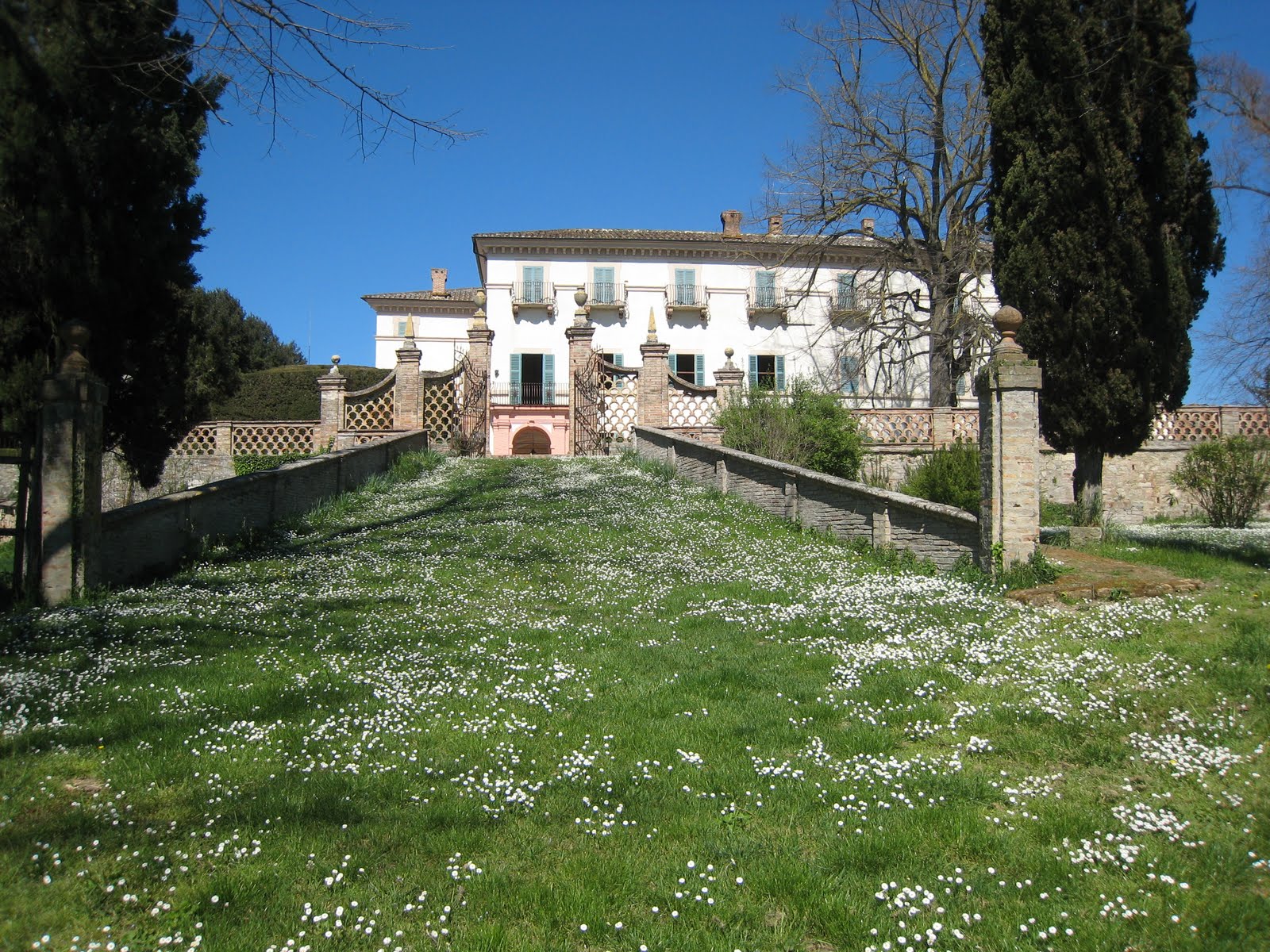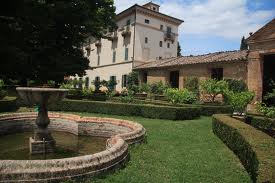
Villa Aureli
This post is also available in:
 Italiano (Italian)
Italiano (Italian)
Villa Meniconi, also known as Villa Aureli (after the name of its first owners), stands in Castel del Piano, just above the plain of the Rio Fratta stream.
The villa, surrounded by gentle hills adorned with avenues of cypresses and maritime pines, is located about 6 miles from Perugia, along Via Pievaiola (which connects Perugia to Città della Pieve). The whole complex occupies a large rectangular area; behind it, there’s the city centre and, on the other side, there are walls and balustrades.
During the Second World War, the villa was occupied first by the German army and then by the allies – fortunately, it suffered very little damage.
The origin of the villa is uncertain: in fact, the traces of a pre-existing building are still visible in an alleged XV-century tower, later turned into a small hunting lodge by Giovanni dé Gregori.
At the end of the war, Count Leonardo di Serego Alighieri, son of Pieralvise, and his wife Laura Guarienti di Brenzone chose Villa Aureli as their permanent residence and dedicated their lives to its restoration and conservation – they thus successfully brought it back to its original splendour of the XVIII century.
Among many astounding features, the villa still retains majolica floors produced in Vietri (near Naples) and designed by the Marquis Raimondo Lignola – their decorations perfectly match those of the walls in each room.
THE GARDEN
Around 1750, Count Sperello Aureli (1722-1791) entrusted Costanzo Batta with the construction of an Italian-style garden raised above the surrounding landscape. This garden with boxwood flowerbeds (Buxus) is embellished with 60 centuries-old orange trees (Citrus × sinesis) and lemon trees (Citrus × limon) growing in large terracotta pots.
In winter, those beautiful plants are stored in a large orangery, built around 1720 by Batta himself.
In front of the orangery, visitors can admire a beautiful four-lobed XVIII century fountain, while on the opposite side there are four tall yews (Taxus baccata), pruned as cubes.
Four turrets soften the corners of this magnificent XVIII century garden, where Meniconi Bracceschi added holm oaks (Quercus ilex) and lime trees (Tilia spp. ) in the following century.
In the background, there’s a wall decorated with pinnacles and terracotta strucures alternated with portals, windows, niches, balustrades and turrets, framing the lookouts on the beautiful agricultural landscape behind them.
This post is also available in:
 Italiano (Italian)
Italiano (Italian)
Contatti
Via Luigi Cirenei 70 - Perugia(PG)
3406459061 - 3472845176
villa.aureli@libero.it
Altre info
10 euro



